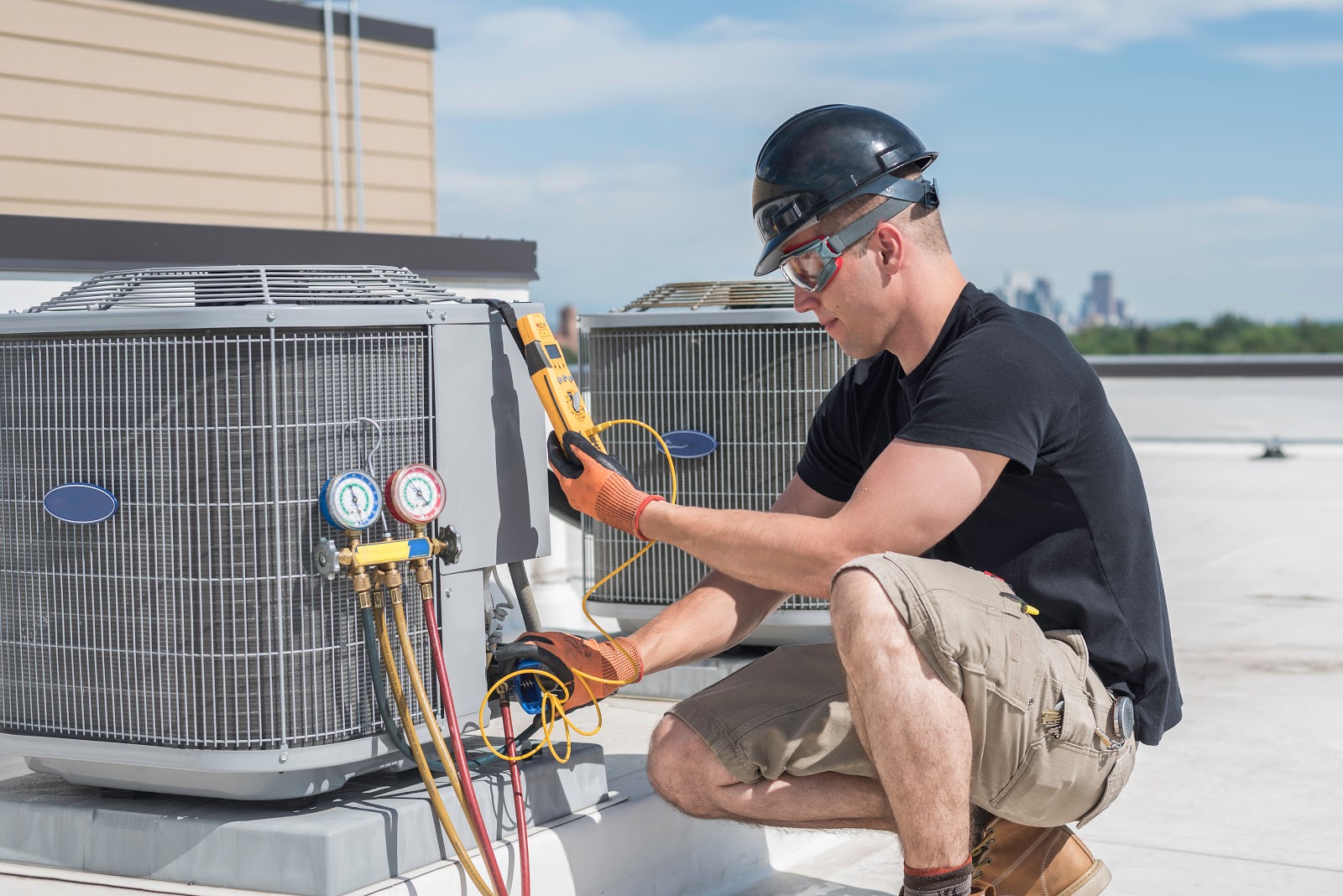Economizer: What is an HVAC Economizer?

If you’re a homeowner, saving money on utility costs can make a huge difference in your budget. This is especially true if your home is older and you have an inefficient HVAC system that is wasting energy (and therefore, your money, too). There’s one component of an HVAC system that can make a sizable impact on your energy costs: an economizer. This device can also be part of a larger strategy to maximize the comfort in your home.
Below, we’ll dive into the details of an economizer and break down the different types and benefits.
What is an HVAC Economizer?
Designed to reduce energy consumption, an economizer is typically part of an outdoor HVAC system, usually attached to the roof. This device is ideal for climates where the temperature is high during the day and low at night. The economizer works by evaluating the outside air temperature as well as the humidity levels in specific models.
When the air outside is cool enough, the economizer automatically pulls it inside to cool off a warm structure. Because this energy solution doesn’t rely on your home’s HVAC, it can reduce mechanical cooling by up to 75 percent in certain climates.
HVAC economizers use what are called logic controllers as well as sensors to read the outside air quality. Dampers inside the economizer control how much air enters your home before being recirculated and exiting through the exhaust system.
Depending on your home and geographic location, purchasing an economizer might be one of the best home energy efficiency improvements. By reducing your air conditioner’s running time, an HVAC economizer can decrease your home’s energy consumption and save you money on electric bills.

What are the Different Types of Economizers?
Although all economizers use the same basic principles, there are a few different types.
Dry Bulb Economizer
Easy and inexpensive to maintain, dry bulb economizers only consider the air temperature, not the humidity. A sensor evaluates the air to determine whether it’s at or below a particular temperature (usually about 55 degrees Fahrenheit). If the external temperature is below the set point and the system identifies a need for cooling, an actuator opens up a damper. The damper allows the external air to mix with the return air and provides a cooler temperature. An issue with this particular economizer is that the humidity may ultimately be too high for ideal comfort.
Single Enthalpy or Wet Bulb Economizer
A single enthalpy economizer uses a sensor that incorporates the evaluation of outside humidity. If the outdoor external air contains a low enough moisture content, it will be pulled in to use to cool off your home or building.
Differential or Dual Enthalpy Economizer
The differential enthalpy economizer can check and see if the air outside meets the cooling requirements. This type of economizer uses two sensors. One sensor measures the return air enthalpy and the other sensor measures outdoor air enthalpy. Dampers in the economizer are modulated for the most efficient and lowest enthalpy that is used for cooling purposes.
Integrated Differential Enthalpy Economizer
An integrated differential enthalpy economizer works the same way as the differential economizer but it can connect and communicate with an indoor multi-stage thermostat.

What are the Benefits of an Economizer?
Installing an economizer in your home provides many potential benefits, including:
- Lower energy consumption: Instead of using your home’s AC unit to cool the inside air, the outside air does most of the work. As a result, your AC unit runs much less and can lead to a lower electricity bill at the end of the month.
- Reduces wear and tear: Because the AC doesn’t need to run as much with an economizer installed, there is a decrease in wear and tear on your HVAC system as a whole. In turn, this means less maintenance work, fewer repairs, and an overall longer lifespan.
- Indoor air quality improvement: Older buildings don’t always have great air ventilation. That musty smell you sometimes get when you walk in somewhere typically means the air isn’t being circulated well. However, an economizer can bring in fresh air from the outside while pushing out stale air.
- Commercial benefits and ROI: According to one study published by the University of North Texas, economizers provided savings of around $16,000 per year because it reduced sick days from air pollutants and toxins.
How Can I Finance an Economizer?
Whether you’re trying to choose the best residential air conditioner or you’re searching for alternative heating sources, creating a comfortable home is essential. If you’re trying to figure out how to finance home improvement projects, like updating your HVAC system, you might be able to turn to Ygrene’s PACE financing for help.
Interested? Ygrene helps simplify the home improvement financing process so homeowners can make their dream home a reality. Aside from economizers and HVAC systems, hundreds of other energy-saving upgrades qualify for financing. Start your home improvement journey and get started today.




